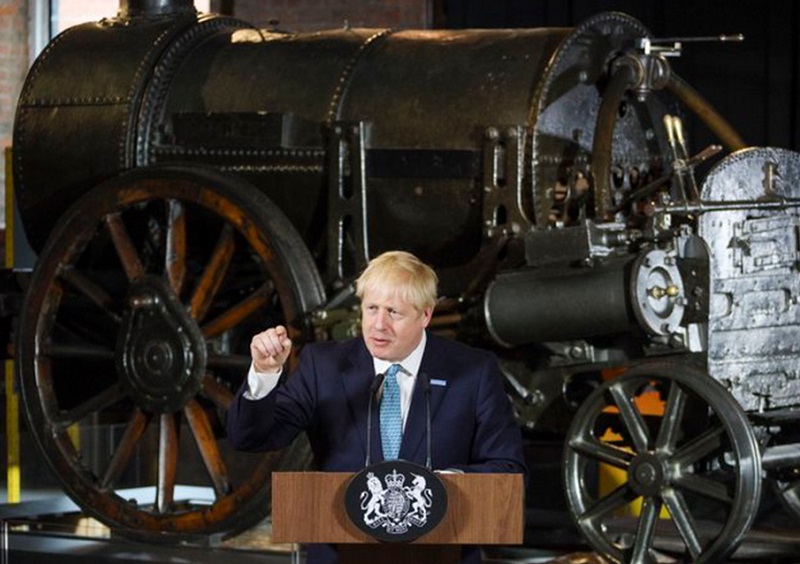What does the new prime minister mean for UK infrastructure?

|
Contents |
[edit] Introduction
July is typically a quiet time in Westminster, as MPs prepare to go back to their constituency offices for the summer recess. But with the climax of the Conservative Party leadership in July 2019, which saw Boris Johnson take over the keys to Number 10, it has been busier than ever.
One thing that was often lacking from the big debates with the candidates were their plans for domestic policy beyond Brexit. So, it was good to see that in his first speech as prime minister, Boris Johnson MP called for investment in “new road and rail infrastructure and full fibre broadband”. A pledge was also made to invest in HS3, the high-speed Leeds to Manchester rail route.
While it is good to see that infrastructure appears to be high on the new government’s list of priorities, there is a risk of ending up with a list of isolated projects. What is needed is a more joined-up approach to ensure that the UK maximises the full potential of any investment.
ICE would like to see the new prime minister go a step further and demonstrate the government’s full commitment to infrastructure delivery by ensuring a National Infrastructure Strategy (NIS) is published in the autumn. This would allow for a long-term, strategic approach that enables infrastructure to deliver the best possible outcomes to the economy and society more widely.
[edit] Who’s who in Whitehall
There have been widespread changes at the top of departments right across Whitehall, from treasury to transport. In one of the prime minister’s first appointments, Andrea Leadsom MP became the new Secretary of State for Business, Energy and Industrial Strategy.
As a former leadership candidate herself, the new secretary of state had run on a pledge to develop an industrial strategy specifically for the north of England. With the keys to the department in charge of industrial strategy, she held the opportunity to make that pledge a reality.
Also joining the new-look Cabinet was Grant Shapps MP, who took over from Chris Grayling as Secretary of State for Transport. In an interview with House Magazine in 2018, he talked about his motivation for establishing the group after spending years inside government:
“Whatever the subject was, there was no one arguing for the infrastructure. There are a thousand reasons not to do something when it comes to infrastructure, rather than get the job done. So, I decided that when I had time, that’s what I would do."
Elsewhere, Robert Jenrick MP moved from the Treasury to heading up the Ministry for Housing, Communities and Local Government. ICE looks forward to supporting him in his new role as it prepares to launch its State of the Nation report on housing and infrastructure in September 2019.
[edit] What will the first six months look like?
While it will continue to dominate the political agenda for the coming months, the initial signs are that Boris Johnson is a prime minister who wants his legacy to be about more than just Brexit.
One thing that is clear, is that this government intends to turn on the taps at the Treasury, with reports of an autumn budget packed with significant investment in infrastructure.
It is widely accepted that the current spending review planned for 2019 will likely be just a one-year extension of the current arrangement. However, ICE expects the new chancellor and prime minister to want to quickly set out their own plans for the future of government spending, with a full departmental review likely in 2020.
ICE will continue to work with decision makers across the spectrum, to ensure the public gets the infrastructure it needs and can trust it will be delivered.
[edit] About this article
This article was written by Vanessa Furey, ICE Campaigns and Public Affairs Manager. It was previously published on the ICE website in July 2019 and can be accessed here.
Other articles by the Institution of Civil Engineers (ICE) on Designing Buildings Wiki
[edit] Related articles on Designing Buildings Wiki
- Brexit - The case for infrastructure.
- Civil engineer.
- Community infrastructure levy.
- Government construction and infrastructure pipelines.
- Green infrastructure.
- Growth and Infrastructure Act.
- Hyperloop
- Infrastructure and Projects Authority.
- Infrastructure UK (IUK).
- Infrastructure nationalisation.
- London infrastructure plan.
- National Infrastructure Pipeline.
- National Infrastructure Plan.
- Nationally Significant Infrastructure Projects.
- Railway engineering.
- Smart cities.
- Traffic and transport.
Featured articles and news
A change to adoptive architecture
Effects of global weather warming on architectural detailing, material choice and human interaction.
How big is the problem and what can we do to mitigate the effects?
Overheating guidance and tools for building designers
A number of cool guides to help with the heat.
The UK's Modern Industrial Strategy: A 10 year plan
Previous consultation criticism, current key elements and general support with some persisting reservations.
Building Safety Regulator reforms
New roles, new staff and a new fast track service pave the way for a single construction regulator.
Architectural Technologist CPDs and Communications
CIAT CPD… and how you can do it!
Cooling centres and cool spaces
Managing extreme heat in cities by directing the public to places for heat stress relief and water sources.
Winter gardens: A brief history and warm variations
Extending the season with glass in different forms and terms.
Restoring Great Yarmouth's Winter Gardens
Transforming one of the least sustainable constructions imaginable.
Construction Skills Mission Board launch sector drive
Newly formed government and industry collaboration set strategy for recruiting an additional 100,000 construction workers a year.
New Architects Code comes into effect in September 2025
ARB Architects Code of Conduct and Practice available with ongoing consultation regarding guidance.
Welsh Skills Body (Medr) launches ambitious plan
The new skills body brings together funding and regulation of tertiary education and research for the devolved nation.
Paul Gandy FCIOB announced as next CIOB President
Former Tilbury Douglas CEO takes helm.
UK Infrastructure: A 10 Year Strategy. In brief with reactions
With the National Infrastructure and Service Transformation Authority (NISTA).
Ebenezer Howard: inventor of the garden city. Book review.
Airtightness Topic Guide BSRIA TG 27/2025
Explaining the basics of airtightness, what it is, why it's important, when it's required and how it's carried out.






















